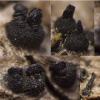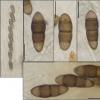
07-12-2025 16:07
Arnold BüschlenHallo, ich habe in einer Moos-Aufsammlung (epiphy

08-12-2025 21:04
Mark Stevens"Hello everyone,I'm relatively new to microscopy (

09-12-2025 12:06
 Andgelo Mombert
Andgelo Mombert
Bonjour,Je recherche l'article concernant Hypobryo

08-12-2025 18:59
 Lothar Krieglsteiner
Lothar Krieglsteiner
.. found by a seminar-participant, I do not know t

08-12-2025 17:37
 Lothar Krieglsteiner
Lothar Krieglsteiner
20.6.25, on branch of Abies infected and thickened

16-03-2014 22:00
Hello,I found this species a few months ago but ha

08-12-2025 13:39
Thomas Læssøehttps://svampe.databasen.org/observations/10572899
Lophiostomataceae
Gernot Friebes,
16-03-2010 21:10
here I have a second indeterminate pyreno which grew on the bark of a living Fraxinus. The ascomata are very conspicuous because they can be from Navicella-like with a small, slit-shaped neck to even Ceratostomella-like with a long and thin neck (I checked that they really are of the same species). The spores are 22,5-25 x 8-9 µm, mature always 4-celled and slightly rough, often with two paler end-cells. The asci are bitunicate and 8-spored. I didn't find a species within the Lophiostomataceae which would fit with my species.
Best wishes and many thanks,
Gernot
Christian Lechat,
16-03-2010 21:16

Re:Lophiostomataceae
Hi, Gernot,
I think your fungus is maybe Lophiostoma maculans H. Fabre
All the best,
Christian
I think your fungus is maybe Lophiostoma maculans H. Fabre
All the best,
Christian
Gernot Friebes,
16-03-2010 22:18
Re:Lophiostomataceae
Hi Christian,
thank you very much! The photos of your find and the description by Saccardo fit quite well. It seems to be a rare species, at least there is apparently not much literature on it. Even google provides only few hits.
Best wishes,
Gernot
thank you very much! The photos of your find and the description by Saccardo fit quite well. It seems to be a rare species, at least there is apparently not much literature on it. Even google provides only few hits.
Best wishes,
Gernot


